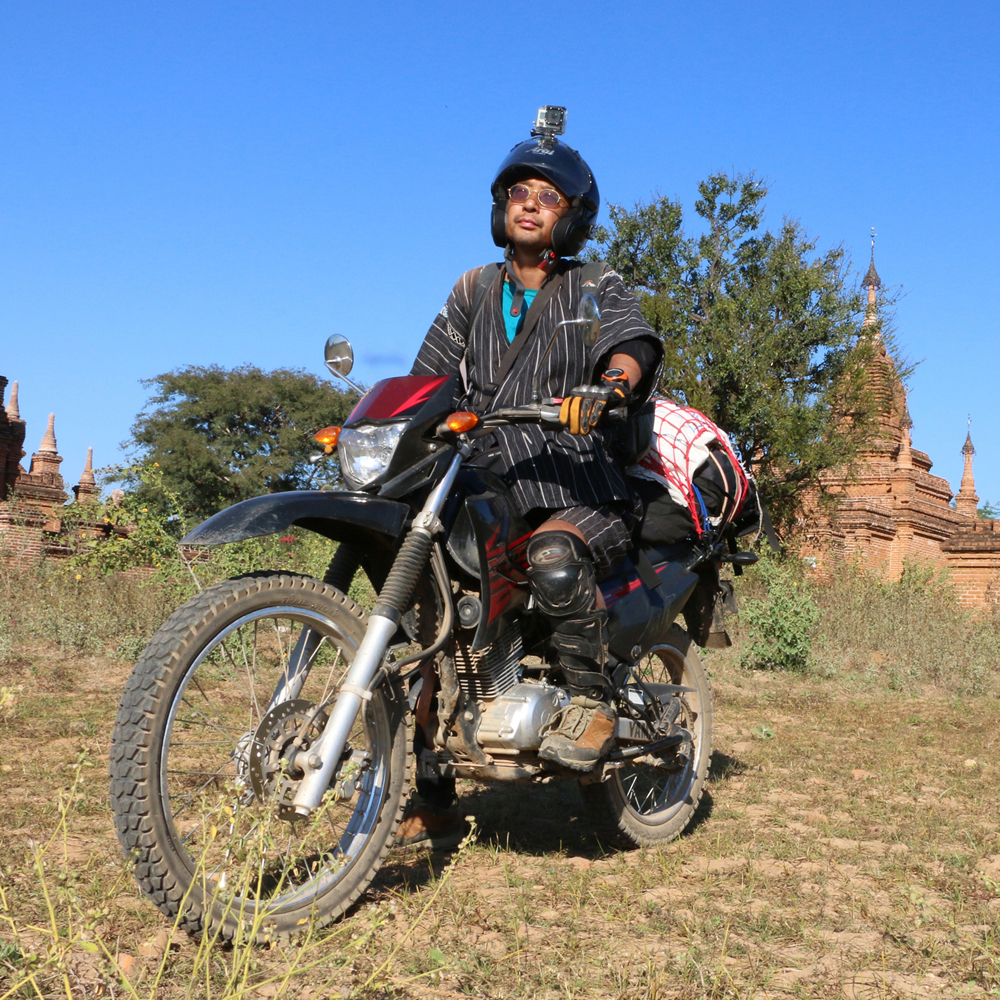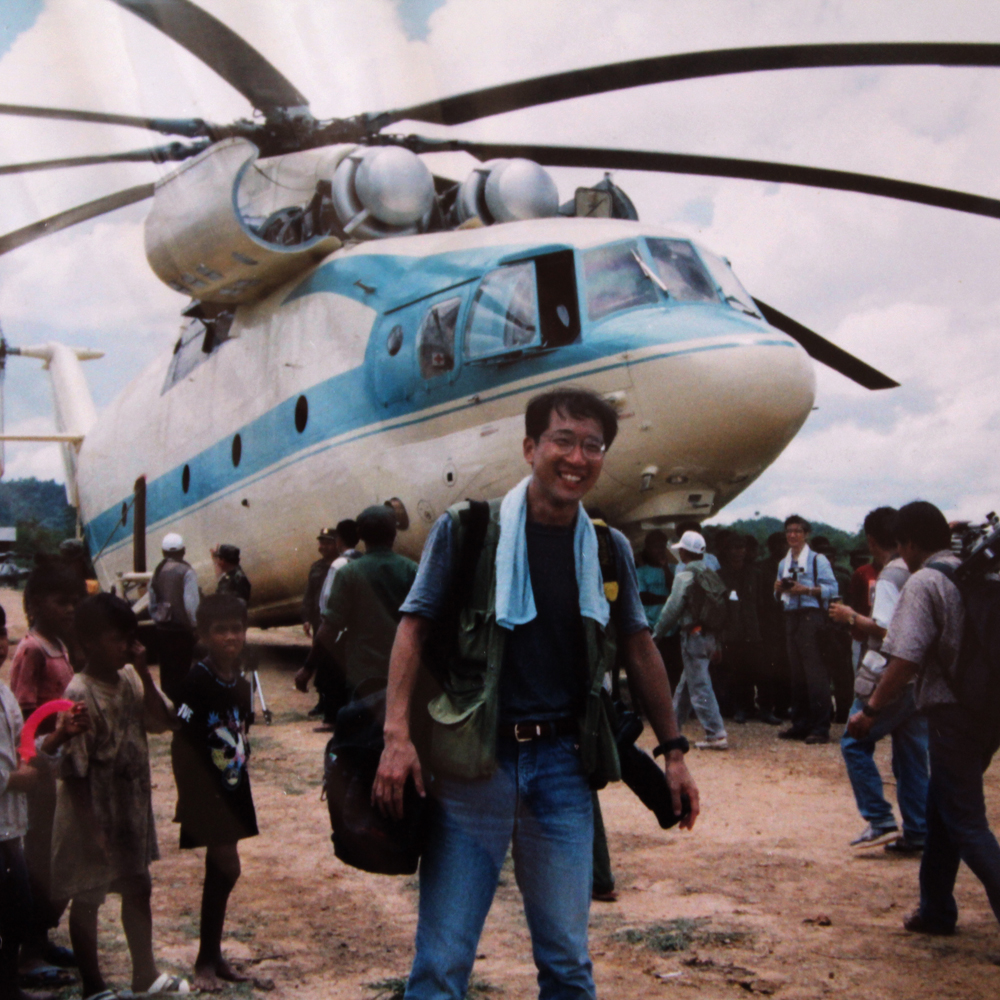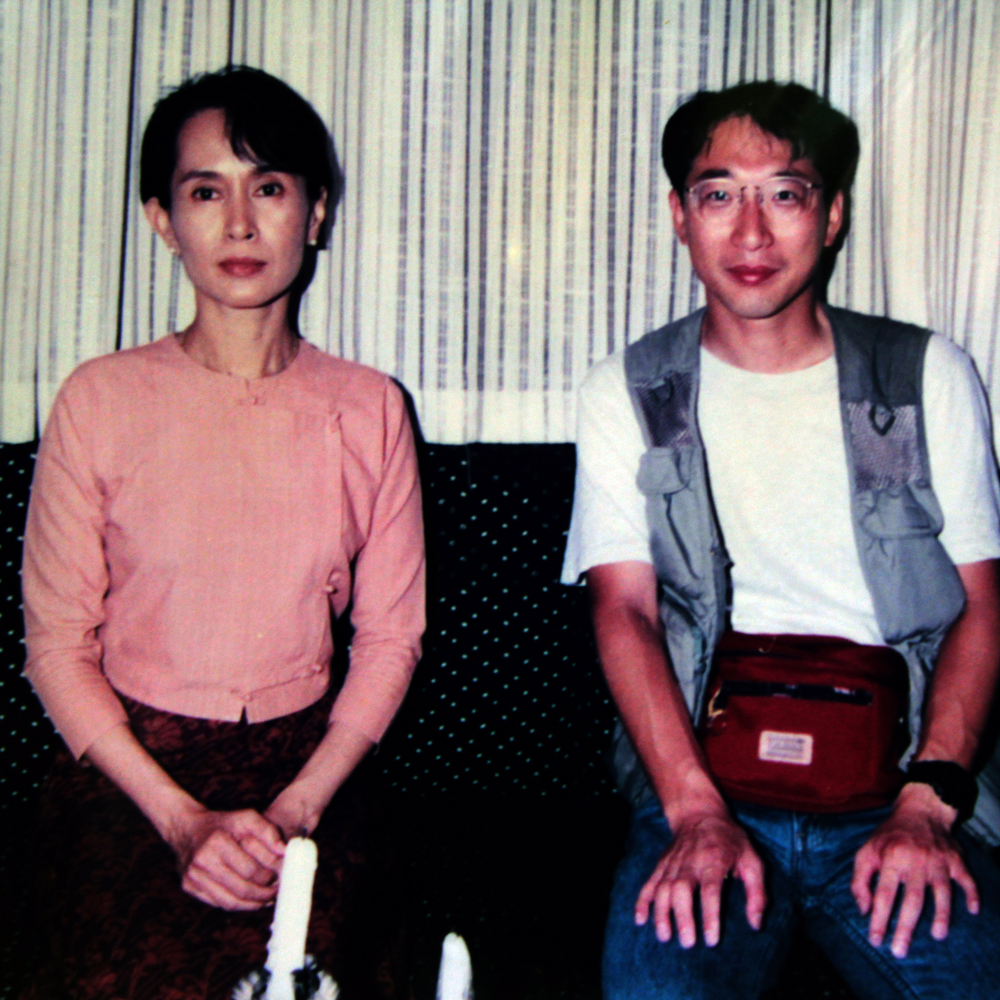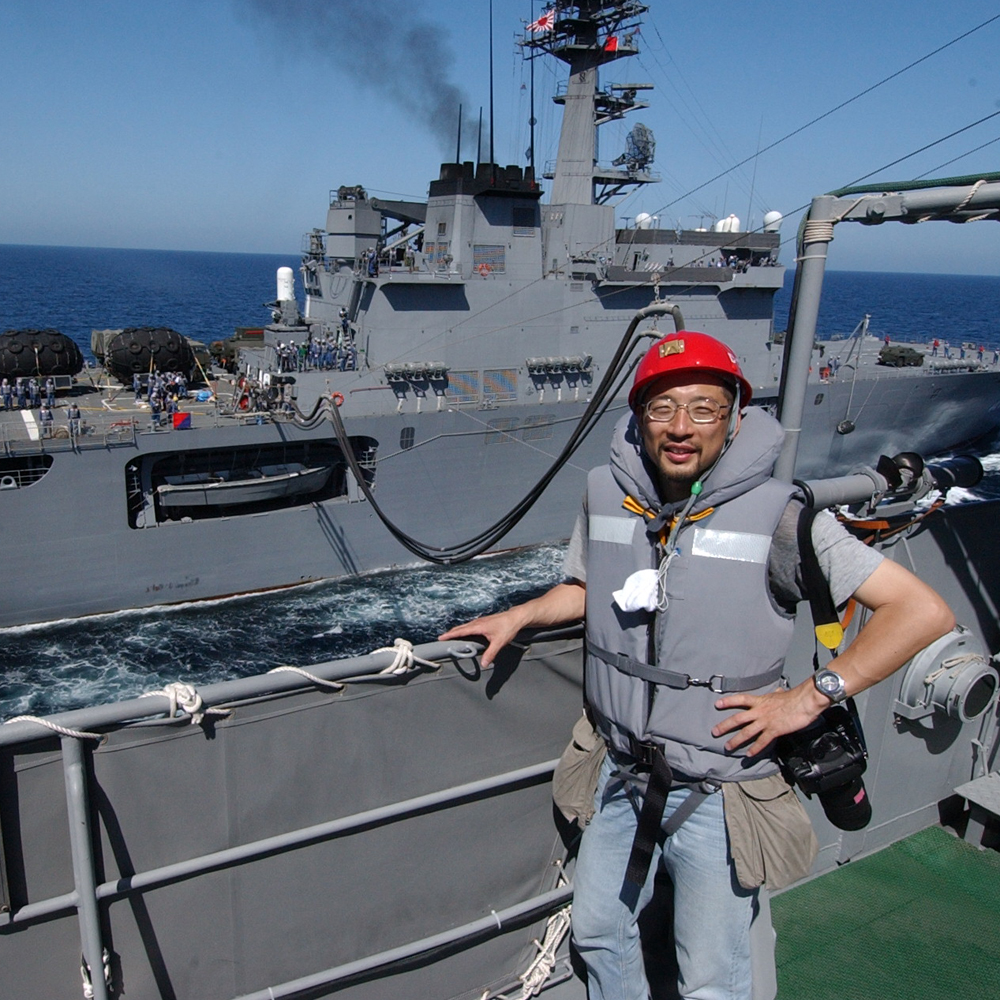
1964年 静岡県沼津市生まれ。
1987年 読売新聞東京本社写真部に入社
1996年 アジア総局駐在員として3年間にわたりアジア全域を取材
1998年 インドネシア・ジャカルタ暴動で東京写真記者協会海外部門賞
1999年 インドネシア・東ティモール紛争で東京写真記者協会海外部門賞
2000年 韓国・南北離散家族相互訪問で東京写真記者協会海外部門賞
2001年 ネパールのヒンズー教をテーマに写真展「ナマステの国々の神々」開催(ペンタックスフォーラム)
また同名の写真集出版(叢文社)
2003年 日本写真家協会企画展「日本の光景」に参加(東京都写真美術館)
2005年 東南アジアの大河をテーマに「メコン川物語」出版(文英堂)
2007年 世界初の撮影となるブータンの氷河湖空撮とロシア・シベリアの燃える湖を取材した
地球温暖化企画で東京写真記者協会海外部門賞
報道カメラマンとして政治、国際、社会、文化など多岐にわたり取材






2016年3月 早期退職し、アウンサンスーチー氏が民主的な政権を樹立したミャンマーに1年半プチ移住。オートバイでミャンマー全土を回り、「ミャンマーの民主化元年」を撮影
2018年9月、ネパール・エベレストのふもとにある標高3850㍍の村に半年にわたりプチ移住
2021年2月1日にミャンマーで国軍のクーデターが起きた後は、支援活動としての写真展や講演を各地で開催
2022年10月以降、「富士山とエベレストをつなぐ夢プロジェクト」活動を開始
2023年6月 合同会社asian-sanpo設立
2024年1月 「妙蔵寺パゴダ再生プロジェクト」活動を開始